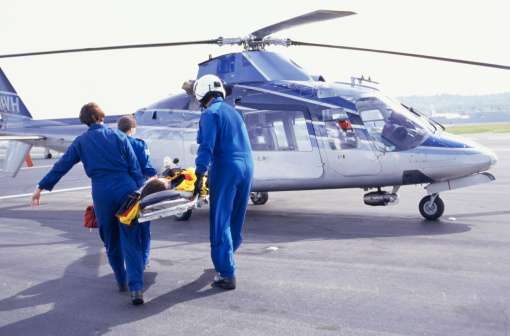Reducing aeromedical transport for traumas saved money and lives

Changes to the trauma triage protocol in Maryland resulted in decreased use of helicopter transport for trauma patients and improved patient outcomes, saving lives and money. The results of a 11-year study of the impact of statewide field triage changes to Maryland's helicopter emergency medical services (HEMS) were published online Wednesday in Annals of Emergency Medicine.
"Purported benefits of HEMS are derived from enhanced crew expertise and decreased time to deliver seriously injured patients to trauma centers," said lead study author Jon Mark Hirshon, MD, FACEP, of the University of Maryland School of Medicine in Baltimore, Md. "However, by shifting to a new protocol that increased ground transports and decreased air transport for less critical patients, we improved patient outcomes while saving the state considerable money. Those are wins all around."
Over the study period, overall EMS transport of trauma patients increased by 21 percent. However, helicopter transport of trauma patients decreased by 49 percent and ground transport of trauma patients increased by 33 percent. During the study period, HEMS patient acuity increased though expected mortality did not.
Researchers studied records for all patients in Maryland's Trauma Registry recorded as directly admitted to the hospital from the scene or transferred to trauma centers between July 1, 2000 and June 30, 2011. They focused in particular on what happened after significant field triage changes were instituted in July 2004, July 2007 and October 2008. Those changes first recommended then later required that patients within a 30-minute drive of a trauma center be transported by ground rather than helicopter and that a physician authorize aeromedical transport for patients in certain trauma categories, regardless of the distance to a trauma center.
"Aeromedical transport costs five to 15 times what ground transportation costs and can also be very dangerous," said Dr. Hirshon. "After nine fatal helicopter EMS crashes killed 35 people in 2008, the NTSB took action and the state of Maryland did, too. New field triage protocols were associated with fewer flights but better expected outcomes, despite having more seriously injured patients. Future research is required to confirm our findings and determine when helicopter EMS can offer the most benefit."
More information: "Maryland's Helicopter Emergency Medicine Services Experience from 2001-2011: System Improvements and Patients' Outcomes"















